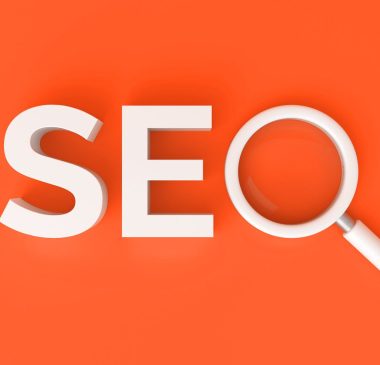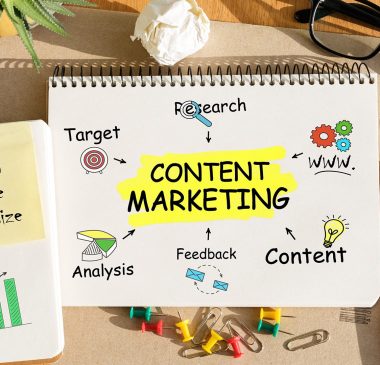Search Engine Optimization (SEO) is a cornerstone of modern digital marketing, enabling businesses to enhance their online presence and reach their target audience more effectively. While the core principles of SEO are broadly applicable, the strategies, particularly in B2B SEO, vary significantly from Business-to-Consumer (B2C) approaches. This blog delves into these differences in detail, helping you understand which B2B SEO tactics to apply to optimize your efforts depending on your business model.
Understanding B2B and B2C Markets
What are B2B and B2C?
B2B refers to transactions between businesses, where one company provides goods or services to another. B2C, on the other hand, involves selling products or services directly to consumers.
Key Characteristics of B2B Markets
- Longer Sales Cycles: B2B transactions typically involve longer decision-making processes with multiple stakeholders.
- Niche Target Audience: B2B companies target specific segments of professionals or industries.
- Higher Value Transactions: Deals are usually larger in scale, involving substantial business investments.
Key Characteristics of B2C Markets
- Shorter Sales Cycles: Consumer purchases are more impulsive and require less deliberation.
- Larger Target Audiences: B2C markets target broader demographics.
- Emotional Engagement: B2C marketing often focuses on connecting emotionally with consumers.
Core Differences in SEO Approaches
Keyword Strategy
- B2B SEO: Keywords are industry-specific and professional. They often include technical terms that reflect the expertise and niche focus of the business.
- B2C SEO: Keywords are broader and designed to capture the interest of a large audience. They tend to be more general and focused on product features or benefits.
Content Strategy
- B2B SEO: The content is detailed and informative, aimed at educating and convincing professionals about the value of a product or service. Formats like whitepapers and case studies are common.
- B2C SEO: Content is engaging and designed to catch the consumer’s eye quickly. This includes videos, quick blog posts, and visually appealing infographics.
Buyer’s Journey
- B2B SEO: Content addresses each stage of a lengthy buyer’s journey, from awareness to decision-making, with a focus on generating leads.
- B2C SEO: Content aims at quick conversions with strong calls to action, often leading directly to sales.
Technical SEO Differences
On-page SEO
- B2B SEO: There is a strong focus on optimizing content for LinkedIn and ensuring that technical content is both informative and keyword-optimized.
- B2C SEO: SEO efforts are more focused on mobile optimization and social sharing features to enhance engagement and direct purchases.
Off-page SEO
- B2B SEO: Strategies include building backlinks from reputable industry-related publications and participating in professional forums.
- B2C SEO: Common tactics involve collaborations with influencers and gaining reviews on popular consumer websites.
Local SEO
- B2B SEO: This is often less critical unless the business targets other local businesses.
- B2C SEO: Extremely important for businesses like stores and restaurants, focusing on local directories and customer reviews.
Conversion Optimization
Conversion Goals
- B2B SEO: The main goal is lead generation, with a focus on converting visits to detailed inquiries or contacts.
- B2C SEO: Aims at quick, direct sales and capturing consumer data for future marketing efforts.
User Experience (UX)
- B2B SEO: The user interface is professional and straightforward, designed to convey information efficiently.
- B2C SEO: Interfaces are often vibrant and interactive, designed to entertain and engage the consumer.
Measuring Success and ROI
Performance Metrics
- B2B SEO: Success is measured by the quality of leads generated and the conversion rate of these leads into sales.
- B2C SEO: Metrics focus on volume of traffic, engagement rates, and direct sales numbers.
Analytics and Tools
Different tools are required to track the effectiveness of B2B SEO versus B2C SEO strategies, with a focus on aligning the tools used with the specific goals of each model.
Conclusion
Understanding the key differences between B2B SEO and B2C SEO is crucial for implementing effective digital marketing strategies. By tailoring your SEO approach to your business model, you can significantly enhance your online presence and achieve better engagement with your target audience.
Call to Action
We encourage readers to share their experiences with B2B and B2C SEO in the comments below. For more insights and detailed strategies on enhancing your SEO efforts, be sure to check our related articles and resources.
FAQs
Is SEO B2B or B2C?
SEO, or Search Engine Optimization, is a crucial strategy that can be applied to both B2B (Business-to-Business) and B2C (Business-to-Consumer) models. The approach differs based on the target audience: B2B SEO focuses on connecting businesses with other businesses, often through industry-specific content and keywords, while B2C SEO aims to reach individual consumers with broader, more general keywords and engaging content.
How to Create a Winning B2B SEO Strategy in 2024?
Creating a winning B2B SEO strategy in 2024 involves several key steps:
- Keyword Research: Identify industry-specific keywords that are relevant to your business and your clients.
- Content Marketing: Develop high-quality, authoritative content that addresses the specific needs and questions of your target audience.
- On-Page Optimization: Ensure all technical aspects of your website, such as meta tags, headers, and URLs, are optimized for your chosen keywords.
- Link Building: Establish credibility by earning backlinks from reputable sites within your industry.
- Performance Measurement: Regularly track your SEO performance using analytics tools to understand what works and make necessary adjustments.
What is SaaS SEO?
SaaS SEO refers to the strategies and techniques used to optimize the search engine presence of Software as a Service (SaaS) companies. The goal is to increase organic traffic to the company’s website by targeting keywords relevant to the SaaS product and industry. This involves content creation that highlights the software’s features, benefits, and differentiators, as well as optimizing the website’s technical setup to improve user experience and conversion rates.
How to Crack B2B?
Cracking B2B, or succeeding in a business-to-business model, involves understanding and effectively addressing the unique needs of business clients. Key strategies include:
- Networking: Building strong relationships through networking events, industry conferences, and professional associations.
- Customized Solutions: Offering tailored solutions that specifically address the challenges and pain points of your target businesses.
- Trust Building: Establishing credibility through case studies, testimonials, and data-driven results.
- Marketing and SEO: Implementing targeted B2B SEO and marketing strategies to increase visibility and attract potential business clients.
- Sales Expertise: Developing a skilled sales team that can effectively communicate the value of your offerings to other businesses.
































